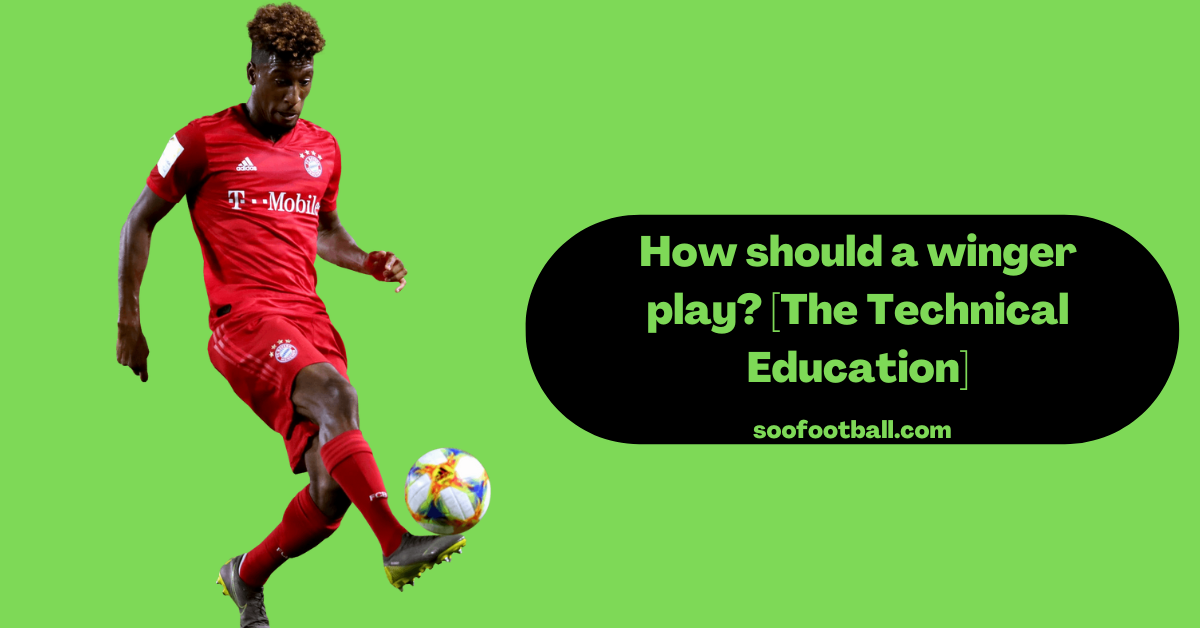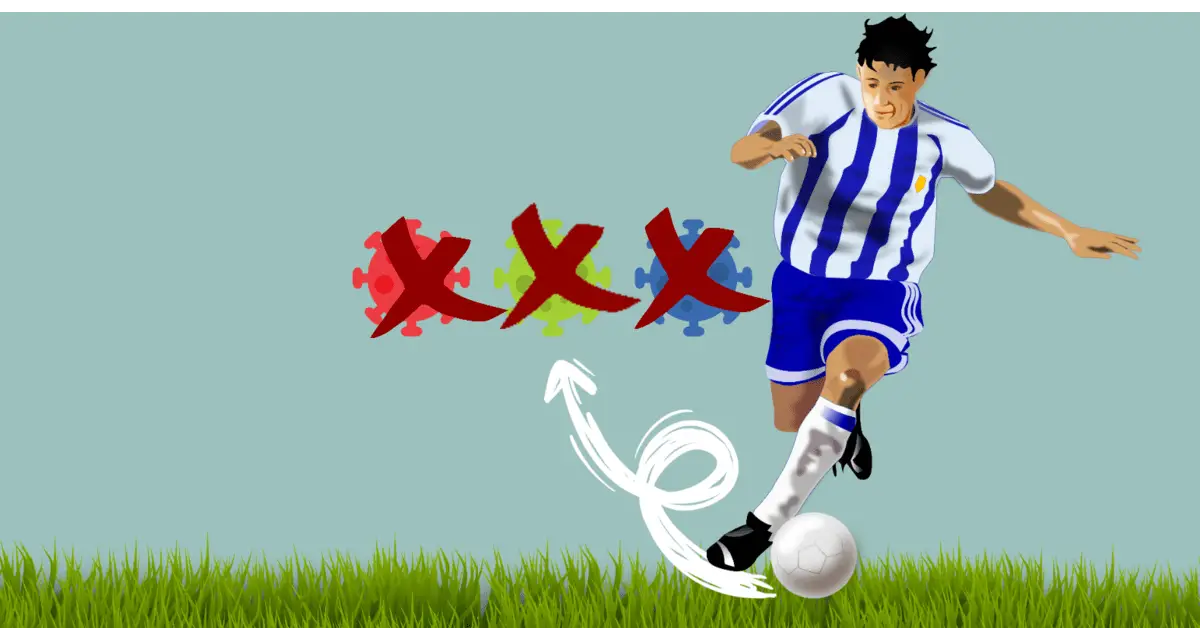If, for any reason want to know more about how a Winger should play in football or want to get more technical analysis or advice on the role, you are in the right place.
In football, a winger is an attacking player occupying the pitch’s left or right side.
They are crucial additions to any team as they can provide attacking threats with bursts of pace, skill and technical ability.
By having an attacking threat in your team, you are more liable to score a goal and put your opponent on the back foot.
I currently play a winger myself, preferably on the left side of the pitch – LW.
So, I can fully understand how hard it is to play this position, but using my analysis and game experience I will try to provide insight into the complexity of the position, and hopefully help some of you be the players you are meant to be.
I have composed this article with 5 aspects that you should consider if you are playing this position or if you are thinking about adding to your football ability. The sections are as follows:
- How wingers are important in modern-era football
- Technical analysis of this position
- Common mistakes that wingers make
- How to be a better winger
- How to enjoy playing the winger position
How wingers are important in modern-era football
The position of the winger has changed dramatically in recent years. So, if you want to know how a winger should play, you should move with the current trend.
Modern-day football refers to more inverted wingers, especially in a 4-3-3 formation.
This means that teams choose to have players who are left-footed playing on the RW (right-wing) or right-footed players playing on the LW (left-wing).
I consider this to be a big change considering that teams used to have more orthodox wingers in previous seasons, especially in the Sir Alex Ferguson era with Manchester United.
Most wingers would take on the defending full-back and cross the ball into the box for the forwards.
Nowadays, players are taught to cut in from the wing position. Resulting in a wider view of the pitch, either to play the ball infield or have a shooting opportunity.
Cutting in will allow them to have the ball on their preferred foot. And will also ensure that the team keeps the ball.
Furthermore, adding more attacking fullbacks would bring more width to the pitch. Allowing the wingers to go forward more makes the attack less conservative.
Having inverted wingers in your team will be a positive addition, primarily because of ball retention.
Having players who can cut inside and keep the ball inside of driving down the final third and crossing it in will provide a better scoring opportunity.
In today’s game, many teams prefer to have their defensive line quite deep if they are not in possession, resulting in having more players in the box to defend the cross.
Technical analysis of How a winger Should Play
After briefly touching on how football has changed the winger’s role to being more inverted, I will now provide a technical analysis of how effective an inverted winger can be and how he should play.
From watching this season, 2021/2022, I have recognized that many teams have nurtured wingers to do the same plays, resulting in added ball retention. The plays are as follows:
Penetrating the defence
Considering that wingers will spark the attack, they can make direct runs with the ball and attack the opponent.
Wingers tend to have specific qualities, including pace, skill/flair, and good reactions. These qualities are to get the team on a counterattack or catch the opposing team out.
In-swinging cross
As the winger cuts in from the sideline, space will be opened up from the striker running into the box and the defending fullback following the attacking fullback from an overlap.
This will allow the winger to put in an in-swinging cross (a curled pass) at the far post. Thus, creating another scoring opportunity.
Finishing
Also, cutting in from the side will allow the winger to open his body and shoot. This can either be from the range or in the box.
Once a player has opened the body, they can finesse the ball with the side of their foot and curl the ball, preferably to the far post.
If the goalkeeper has left his near post open, then shooting near post is also an option.
Common mistakes wingers make
Now, if you are looking to transition into becoming a winger, then are some things you should consider. These are mistakes that I tend to make, so I am working on trying to develop too.
Wingers tend to run with tunnel vision. As soon as they receive the ball, they want to dribble and push the ball up the field, resulting in them being isolated from defenders.
If they run across the sideline eventually, they will run towards the corner flag, resulting in the defending fullback, the centre back pressing the winger.
The central midfielder may cover the centre-back. A tip I received was to check your shoulders before receiving the ball. That way, you can adapt to any situation allowing you to keep possession.
Another common mistake is that wingers will cross the ball in with no intention. They might cut inside or be at the corner when they decide to cross the ball in.
If they are passing the ball with no intention, then that would allow the opposition to collect the ball and break on a counterattack.
Communicating with your teammates and reading the tempo of the game will allow you to make the right decisions.
Sometimes crossing the ball may not be the right decision; maybe holding it or passing backwoods could result in a better attacking situation.
How to enjoy playing the winger position
Now I am not just relating this passage to only playing the winger position but also to playing football as a whole. It is a beautiful game.
Wingers tend to be quite isolated on the field as they are by the sideline. This makes it hard for players to shine; teammates are not able to get to their position in time to help a winger.
Furthermore, they are expected to do something with the ball once they receive it.
Are they going to play the ball forward? Are they going to make a direct run at the defender? This adds a lot of pressure and can it take its toll on performance.
To enjoy your football, you need to be confident. If a winger is confident on the pitch and with the ball, then they are a problem!
Having the confidence to try new things that may throw off the defenders or put yourself/ a teammate in an attacking position are the qualities of an effective player.
Also, having the needed confidence will come with training and dedication. Training the same drill consistently will make it easier for you to do it on match day.
Final Thought on The Winger Position in Football
To conclude, I believe the winger position is one of the best positions on the pitch.
Whether you are playing football professionally or just a fan, you will always be entertained when a winger receives the ball.
There is something about that excitement when onlookers do not know what to expect from you. This position allows players to express themselves, especially in a counter attack tactics.
They will not have the same freedom playing in any other position as they will need to do what is best for the team.
Having inverted wingers is also a beneficial aspect for any team. Cutting in will naturally open up the game, allowing teams to have a better opportunity to attack.
It will be exciting to see how new generations will deal with this change in football and whether we will see anyone surpass the greats like Messi and Ronaldo.
Overall, I’m confident this piece has helped you know how a winger should play. Feel free to share your thoughts in the comment section.
Further Reading:





